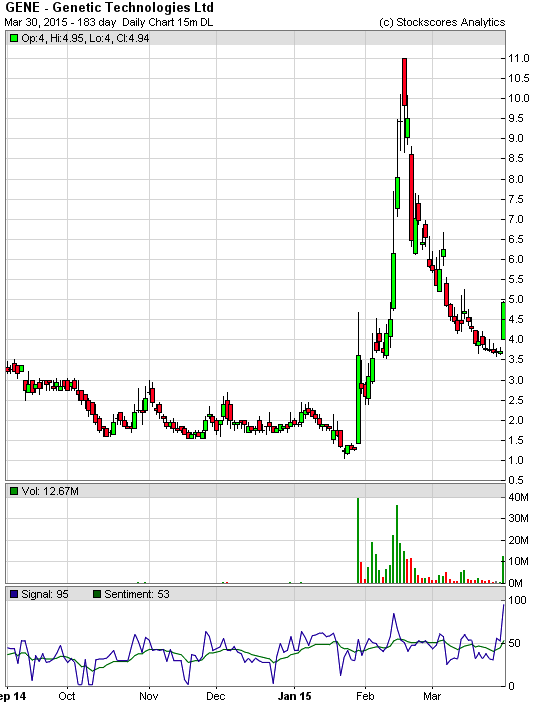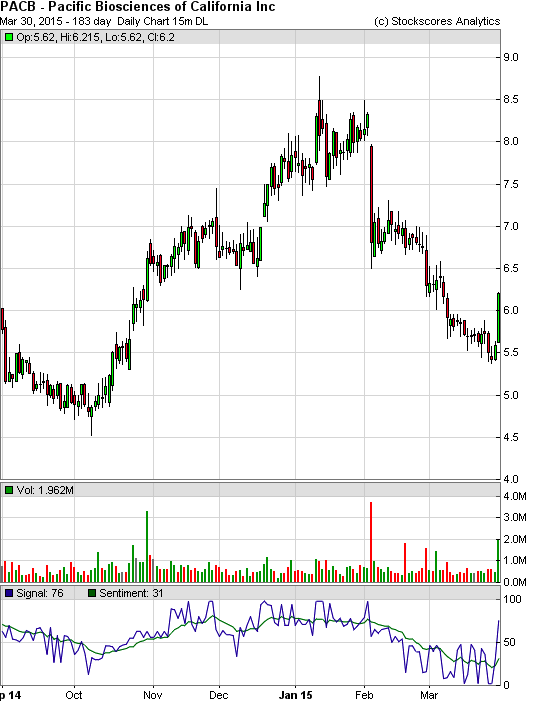

In This Week’s Issue:
In This Week’s Issue:
– Stockscores Free Webinar – Position Trading With the Stockscores Approach
– Stockscores’ Market Minutes Video – When to Buy Breakouts
– Stockscores Trader Training – 10 Ways to Be a Better Trader
– Stock Features of the Week – Abnormal Action
Stockscores Free Webinar – Position Trading With the Stockscores Approach
Wednesday April 1 – 6:00 pm PT, 9:00 pm ET
Position trades require less time to find and monitor. This webinar will show how the Stockscores indicators and Market Scan filtering tool can be used to find strong stocks for one to three months holds.Click here to register
Stockscores Market Minutes Video – When to Enter Breakouts
All stocks that do well must make a breakout but do you buy the breakout or wait for the pullback which often comes after? This week, I look at this question and then do my regular weekly market analysis.
Click here to watch
Trader Training – 10 Ways to Be a Better Trader
The stock market is constantly evolving and every day I work to improve how I trade it. Year after year I use the same basic principles and methods, just apply them in different ways to suit the current market conditions.
One of the constants that never seems to change is how fear and greed guide the market action. Succumbing to either of these emotions often leads to financial loss.
Here are 10 things you can do to become a better investor and avoid these traps:
1. Use Strategies that Work
Your approach to the market won’t have a hope if your analysis methods are not effective. There are many ways to analyze stocks, take one that you like and test it until you have confidence that it works.
2. Write a Trading Plan
Success has a better chance of happening when you write down a plan to get there. Make your plan include your rules for entry and exit, risk tolerances and a process for review. Adapt your plan over time as you find better ways to achieve success.
3. Manage Risk
Understand the risk in every trade you make and don’t take risks that you cannot tolerate. If your exposure to loss is more than you are comfortable with you will inevitably break your discipline.
4. Limit Losses
You should always know where the exit door is in case something goes wrong. When you buy a stock, decide the point where the market will have proven your decision to enter wrong. If the stock falls to that price, get out. Don’t let small losses grow in to big losses.
5. Blame Yourself
There may be a good argument for why a loss you have suffered is someone else’s fault. The newsletter writer could have been wrong, the media could have been wrong, the government could have gone back on a promise, the company could be corrupt. Blaming others will never get your money back. You will not change the actions of others, you can only change your own. Therefore, blame yourself for everything that happens with your money and take steps to make it better.
6. Stop Falling in Love
The more you know about a company, the more likely you are to ignore the market’s message. Companies want you to own their stock; the more investors that they get to own their stock, the higher the price goes. As a result, there is a bias to the information that you are exposed to, if you listen too much you may miss activity in the market that is telling you that something is wrong.
7. Practice Patience
Up trends start slowly so you have to be patient when stocks are trying to start a long term trend. The profit is in the patience, hold on to strong stocks so long as they are showing strength. When looking at a company, avoid a short term outlook that can mislead you about the long term trend.
8. See the Other Side of the Story
Everything you know about a stock may tell you to buy it and you may do so with complete commitment. But, always ask yourself, “Why is someone willing to sell to me at this price.” If you understand their motivations for selling versus your motivations for buying, you can better determine who is right. Without an understanding of the other side of the trade you can not determine whether the other side is wrong.
9. Avoid the Herd
The crowd usually loses. When buying, look around at your fellow buyers. Are they well informed, smart investors or are they generally uninformed people watching 60 Minutes? Always try to be one step ahead of the herd.
10. Analyze Your Results
The market is always evolving, making constant evolution in your approach to the markets important. On a regular basis, analyze your trades and looks for patterns of self destruction. Make changes as necessary.

The Abnormal Breaks Market Scan looks for stocks making statistically significant price gains with abnormal volume. When this happens from a low price volatility chart pattern, through resistance, the stocks often go in to an upward trend. I ran this scan today and found two that look interesting, see below.

1. GENE
GENE was a really hot stock in February but cooled off on a pull back through March. It came alive again today, breaking the pullback trend line with a strong up move on heavy volume. Support at $3.60 or $4.40, depending on how aggressive you want to be.

2. PACB
PACB showed abnormal price and volume activity on Monday as it broke its downward trend line from a rising bottom. Support at $5.40.

Stockscores Free Webinar – Trading Styles
There are many ways to trade the market, the choice you make depends on your time, capital, personality and skill. This webinar will consider the different choices, demonstrate the process for each and answer your questions on whether you should be a long term investor, a short term active trader or something in the middle.
Click here to register
References
Disclaimer
This is not an investment advisory, and should not be used to make investment decisions. Information in Stockscores Perspectives is often opinionated and should be considered for information purposes only. No stock exchange anywhere has approved or disapproved of the information contained herein. There is no express or implied solicitation to buy or sell securities. The writers and editors of Perspectives may have positions in the stocks discussed above and may trade in the stocks mentioned. Don’t consider buying or selling any stock without conducting your own due diligenc

 A couple of weeks ago I was listening to an hour-long segment on CNBC with Warren Buffett. He brought up a great point about the type of investments he prefers and the difference between an investment versus a speculative trade. I feel what he mentioned is worth sharing so here it is.
A couple of weeks ago I was listening to an hour-long segment on CNBC with Warren Buffett. He brought up a great point about the type of investments he prefers and the difference between an investment versus a speculative trade. I feel what he mentioned is worth sharing so here it is.
 “But if you’ve got a good temperament, which basically means being very patient, yet combine that with a vast aggression when you know enough to do something, then you just gradually learn the game, partly by doing, partly by studying. Obviously the more hard lessons you can learn vicariously, instead of from your own terrible experiences, the better off you will be.” – Charlie Munger
“But if you’ve got a good temperament, which basically means being very patient, yet combine that with a vast aggression when you know enough to do something, then you just gradually learn the game, partly by doing, partly by studying. Obviously the more hard lessons you can learn vicariously, instead of from your own terrible experiences, the better off you will be.” – Charlie Munger
 Every few centuries or so, an amazing new technology comes along that fundamentally changes human civilization.
Every few centuries or so, an amazing new technology comes along that fundamentally changes human civilization.













